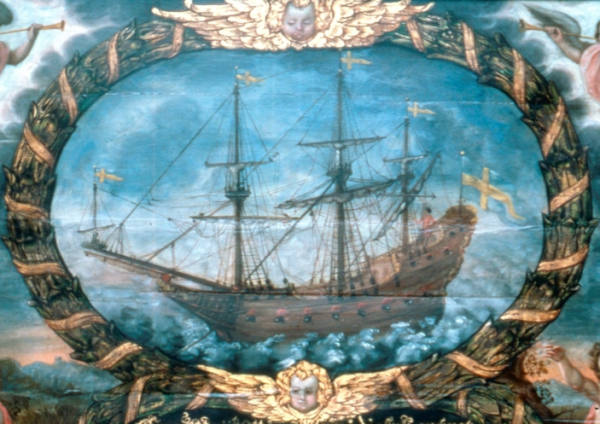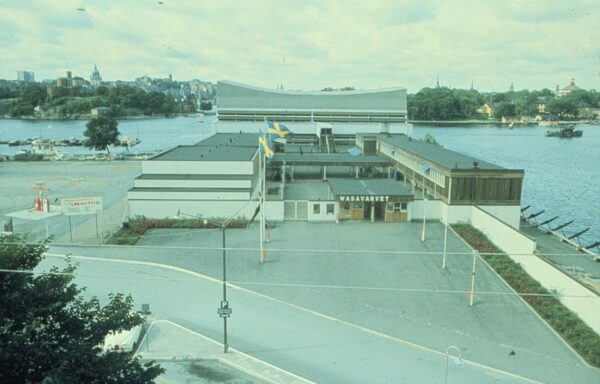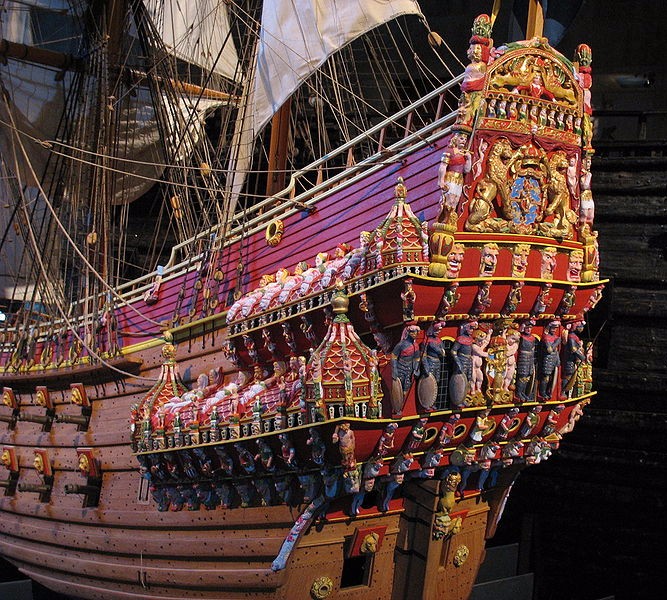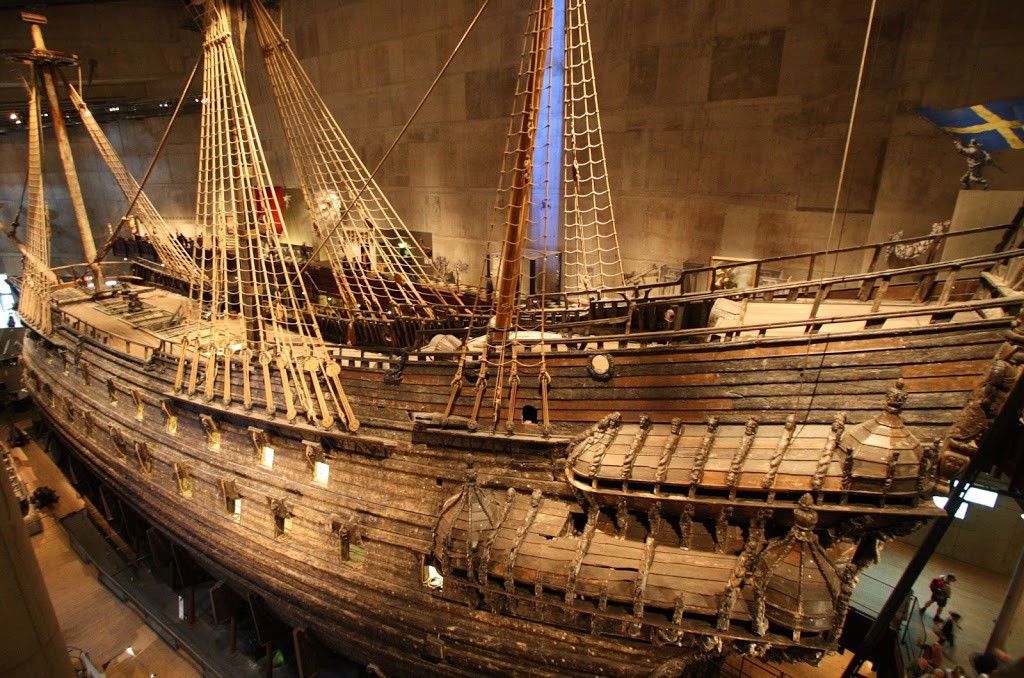Since my stays in Copenhagen and Oslo also left me with “so little time,” you might wonder why I reserved that description for Stockholm. The city is so dense with museums – nearly 100 – that it simply makes sense.
At the end of the previous post, I was on DjurgĂĄrden – Stockholm’s recreation island. Here’s a partial list of places you can see there:.
Skansen.
Vasa Museum.
One I omitted is Abba: The Museum. I’d tried to purchase tickets online Monday night but the website repeatedly rejected my credit card. Tuesday, I twice allowed the inordinately lengthy lines to intimidate me into forgoing my chance to become the fifth member of Abba.
Based on the strong recommendations from two Testudo Times acquaintances, I made my first stop the Vasamuseet.
The Vasa Story.
Recall that in the 17th century Sweden was one of the great European powers. King Gustav II Adolphus had initiated a war with Poland-Lithuania in 1621 that would last eight years. In 1626, he commissioned the construction of what was, up to that time, the largest warship ever built. In truth, the King commissioned four ships – two small ones and the two large ones – Vasa and Ă„pplet. The latter sailed until 1659 when, after serving in the Thirty Years War, it was sunk together with nine other large Swedish ships, to become part of an underwater barrier intended to inhibit enemies from reaching Stockholm by sea. The former met a more sudden and dramatic fate.
As noted above, at the time of their construction, the Vasa and its sister ship were the largest warships ever attempted. Each had two gundecks (they were among the first ships with this distinction) and Vasa carried 64 canons each weighing nearly two tons. Bearing the name of the Swedish royal family and adorned with highly symbolic carvings and sculptures intended to display the wisdom and military power of the monarch, the Vasa, approximately 70 meters long and 12 meters wide with its tallest mast reaching 55 meters, was to be the pride of the Swedish Navy. A model in the museum shows how the finished version likely looked:.
In part because the Dutch were considered the greatest shipbuilders of the time, two Dutchmen oversaw the project. The first was master shipwright Henrik Hybertsson who had never attempted to design or build a ship of this size. The other was Arendt de Groote. His principal task was securing the material – wood, paint, cloth, and rope fibers that the ship’s construction required.
De Groote’s role was, in some ways, more critical than Hybertsson’s. The construction of Vasa alone needed wood from 1,000 oak trees. Much of this had to be imported because of limits on felling oaks in Sweden. De Groote imported some of that wood from Poland, ironically, the planned target of Vasa’s guns. Even more ironically, de Groote needed to circumvent a royally declared Swedish embargo on all trade with Poland. He bought the wood from Poland and had it shipped to Amsterdam. There, its source was concealed before sending it to Sweden. Embargo be damned.
One of Gustav’s vice-admirals expressed concerns about the ship’s stability because it had failed the lurch test in which 30 men ran from one side of the ship to the other. The test stopped after three rounds because the ship rocked so violently. Nevertheless, after nearly two years under construction, Gustav ordered the ship’s launch on 10 August 1628. Nearly all of Swedish nobility, royals and spies from other European countries, and most of Stockholm’s population ringed the harbor as the great ship set sail.
Within a few hundred meters of setting out, the ship began to list but the crew managed to set it aright. With the otherwise watertight gun ports open, the canons fired a salute, once again unbalancing the ship. This time, the crew couldn’t set the ship right, the gun ports, dangerously low due to the ship’s design, reached the water line and, because they were open, the ship began taking on water. With a life even briefer than the Titanic, a mere 1,300 meters into its maiden voyage, Vasa sank to the bottom of Stockholm’s harbor.
Of course, the embarrassed king immediately launched an inquiry into finding the reason the ship sank and naming an appropriate scapegoat. The first target was de Groote who quite cleverly evaded any responsibility by claiming that he was merely a merchant who had acquired the materials specified by the shipwright thus pointing the finger of blame directly at his mentor and partner Henrik Hybertsson. Hybertsson used a less ingenious way of avoiding responsibility. The master shipwright became ill sometime in 1625 and ceded supervision of the construction to another Dutchman, Henrik Jacobsson. Hybberston died in 1627 – a year before the Vasa disaster.
So, how did Jacobsson manage to escape any punishment? He, too, pointed at Hybertsson stating that he had simply built the ship as his predecessor, who had followed the specifications approved by the king, had directed.
The reason the Vasa sank but its companion the Ă…pplet didn’t was the subject of centuries of speculation.

[Ă…pplet image from Swedish Wikipedia – Public Domain.]
The three most common suppositions have all proven inaccurate.
Theory one:Â On firing the salute, the guns recoiled and rolled across the deck causing the instability that sank the ship. However, when the ship was salvaged, all the gun carriages were in place. Theory one debunked.
Theory two: The ship didn’t carry enough ballast. Records show that the ship carried 120 tons of rock for ballast. Calculations and simulations made with current technology show that, not only was this sufficient, but had the ship carried more ballast it would have been less stable. This sinks theory two.
Theory three: The crew was drunk and unable to set the ship aright when it began to list. However, no records exist of alcohol on board and, as was traditional at the time for a maiden voyage, many of the crew had family on board. Most importantly, the ship was launched on a Sunday. The crew would have been coming from church rather than drinking. Thus, this theory, unlike the ship, also fails to hold water.
In fact, three factors combined to pull Vasa to the bottom of Stockholmsström. First, the otherwise watertight gun ports were open thus allowing the ship to take on water. Second, the waterline shows that over 15 meters of the ship sat above the water while only four meters were below creating an unmanageably high center of gravity limiting the ship’s stability.
But why did Vasa sink when its sister ship didn’t? Well, the final, and probably most important reason is that Åpplet was about one meter wider than Vasa and this meter provided just enough stability to keep the former afloat.
Vasa’s Resurrection.
The first attempt to raise the ship came a mere three days after it sank. Using principals similar to those that would be used to raise the ship more than 300 years later, an English engineer, Ian Bulmer, managed to right the ship but lacked the lifting power and technology to actually raise it from the bottom of the harbor. Instead, he mired it more immovably in the mud. This actually helped preserve the ship and proved a boon when it was rediscovered in 1956.
The canons were another matter. It’s likely that the canons cost nearly twice the total construction cost of the ship itself. Thus, 61 of the 64 canons were salvaged within 30 years of the ship’s sinking. No one knows the fate of those canons so only three are on display in the museum today.
The ship passed into legend until an amateur archaeologist, Anders Franzén, located it in 1956 just off the island of Beckholmen. The Vasa was largely intact because the cold and brackish waters of the Baltic are free from shipworms and woodworms. Also, the mud that covered the ship had acted as something of a preservative.
The effort to raise Vasa began in August 1959 and, after scores of gradual lifts it finally broke the surface of the water on 24 April 1961. Nearly 333 years had passed but Vasa was once again visible to the citizens of Sweden and the world.
For the next 27 years, the ship sat in a facility called The Vasa Shipyard (Wasavarvet in Swedish).

[Image from Internet Archive.]
The public could visit it and conservators could work on it but the facility was cramped and not designed for either type of activity let alone both so, after much haggling, the Swedes decided to build Vasa a new home. They broke ground on the current Vasa Museum in 1987 and, with three of the four walls constructed, the ship was floated into the partially completed building in December 1988. The Vasa Museum (all my photos are here) officially opened to the public in 1990. Here’s the Vasa as it looks today:.
But this day’s not yet over. I have more Stockholm experiences to share but for now, you’ll have to wait for my next post.

